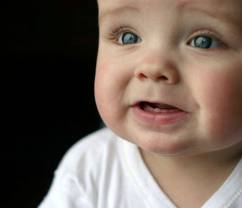A febrile seizure is an episode of unconsciousness and violent convulsion of the body usually with fever due to childhood illnesses such as flu, cold or infection of the ear. Children between ages 6 months to 5 years are prone to febrile seizures which happen with the onset of a fever. Febrile seizure is a unique reaction of the brain to fever usually on the first day.
Symptoms of a febrile seizure
- The seizure can range from mild to severe shaking of the muscles
- A fever higher than 100.4
- Shaking and jerking arms and legs

The seizure can range from mild to severe shaking of the muscles
The seizures that last more than 10 minutes along with breathing difficulty, stiff neck, vomiting and severe sleepiness requires immediate medical care.
Classification
- Simple febrile seizure is the common type and usually last for a few seconds to 15 minutes. It does not recur within a 24-hour period.
- Complex febrile seizure last longer than 15 minutes and can recur several times within 24 hours on the onset of a fever and it is a sign that the child is sick.
Causes
- A high body temperature
- Viral infection such as flu and roseola
- Post-immunization seizure where the child usually develops a mild fever after a vaccination
Treatment
- Stay calm and place the child on his/her side on a flat surface where there is no danger of falling. A child with febrile seizure moves involuntarily and there is a for risk of falling when the surface is not stable.
- Avoid moving the child if he/she is already in a safe surface. Another option is positioning the child on the lap and support with your hands.
- Remove hard or sharp objects near the child. Remove or loosen clothing from the waist up especially around the neck.
- Avoid restraining the child or interfere with his/her movements
- Turn the child into her/his side or stomach to help with breathing. A child experiencing a febrile seizure usually vomits or produce more saliva. Reposition the affected child to make sure that the breathing passages is clear. Avoid inserting anything inside the mouth of the child to prevent choking or an involuntarily bite.
- If the child has regained consciousness, provide pain medications such as acetaminophen or ibuprofen.
- Apply a cool or wet cloth on the face and neck of the child to relieve and lessen the temperature of the body.
- Bathe the child using lukewarm water for relaxation and lessen the fever. Avoid using cold water when bathing the child or rubbing alcohol to prevent shock that can worsen the condition.
- Once the seizure has ended, let the child sleep. Sleepiness is usually common after a seizure. Sleeping lowers the fever. Check the breathing while sleeping. If the child is not breathing after a febrile seizure, start mouth-to-mouth rescue breathing or CPR.
Disclaimer / More Information
The material posted on this page on febrile seizure is for learning purposes only. Learn to recognize and manage infant issues by taking a first aid and CPR class with one of our training providers.
FACT CHECK
https://www.webmd.com/children/febrile-seizures#1
https://en.wikipedia.org/wiki/Febrile_seizure
https://www.mayoclinic.org/diseases-conditions/febrile-seizure/symptoms-causes/syc-20372522
